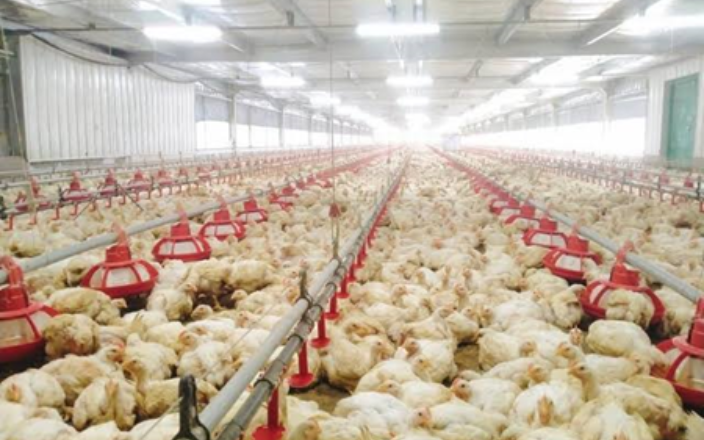Introduction
India’s poultry sector is experiencing remarkable growth, with broiler breeder farms (parent stock farms) serving as the backbone of hatchery operations. These farms supply hatching eggs, ensuring a steady pipeline for broiler chicken production.
For entrepreneurs planning to establish a broiler breeder farm, evaluating land requirements, shed construction costs, equipment investments, and overall infrastructure expenses is critical. The farming model they choose will significantly impact their financial planning and operational efficiency.
There are three predominant systems used in broiler breeder farming:
- Deep Litter System (Traditional method)
- Cage System (Modern space-efficient method)
- Environmental Controlled (EC) System (Advanced, high-tech system)
- Deep Litter System: The Traditional Approach
The Deep Litter System is a widely adopted, cost-effective model where birds are housed on the floor with bedding materials such as rice husk or sawdust. It is suitable for small to medium-scale farms.
Land Requirement
- Shed Space: 1.5-2 sq. ft. per bird
- Total Land Needed:
- 10,000 birds: 2-3 acres
- 20,000 birds: 4-5 acres
Shed Construction Cost
- Open-sided sheds with proper ventilation
- Cost per sq. ft.: Rs.250-400
- Total Shed Cost (for 10,000 birds): Rs.40-60 lakh
Equipment & Infrastructure Costs
- Feeding System: Rs.200-500 per bird
- Watering System: Rs.50-100 per bird
- Lighting & Ventilation: Rs.2-5 lakh
- Egg Collection System: Rs.5-8 lakh
- Cage System: Maximizing Space & Efficiency
The Cage System employs multi-tier stacked cages, improving space utilization, biosecurity, and efficiency in egg collection.
Land Requirement
- Shed Space: 0.7-1 sq. ft. per bird
- Total Land Needed:
- 10,000 birds: 1.5-2 acres
- 20,000 birds: 3-4 acres
Shed Construction Cost
- Sturdy sheds with enhanced ventilation
- Cost per sq. ft.: Rs.400-600
- Total Shed Cost (for 10,000 birds): Rs.60-80 lakh
Equipment & Infrastructure Costs
- Cage System Setup: Rs.1,000-1,500 per bird
- Automated Feeding & Watering: Rs.300-600 per bird
- Egg Collection System: Rs.10-15 lakh
- Waste Management System: Rs.5-8 lakh
- Environmental Controlled (EC) System: The Future of Poultry Farming
The EC System is a high-tech, fully automated model that enhances productivity, climate control, and disease prevention, making it ideal for large-scale commercial farms.
Land Requirement
- Shed Space: 0.5-0.7 sq. ft. per bird
- Total Land Needed:
- 10,000 birds: 1-1.5 acres
- 20,000 birds: 2-3 acres
Shed Construction Cost
- Fully enclosed sheds with climate control
- Cost per sq. ft.: Rs.800-1,200
- Total Shed Cost (for 10,000 birds): Rs.1-1.5 crore
Equipment & Infrastructure Costs
- Automated Feeding & Watering: Rs.800-1,500 per bird
- Climate Control System: Rs.20-30 lakh
- Automated Egg Collection: Rs.15-20 lakh
- Waste Disposal & Biosecurity: Rs.10-15 lakh
Conclusion: Choosing the Right System for Your Farm
The decision to opt for Deep Litter, Cage, or EC systems depends on several factors, including:
- Check Investment capacity
- Check Land availability
- Check Labor efficiency
- Check Long-term profitability
The Deep Litter System is ideal for cost-conscious, small-scale farmers, while the Cage System offers better productivity with moderate investment. However, for large-scale commercial operations, the EC System provides maximum efficiency, automation, and disease control, albeit with a higher initial cost.
Prospective poultry entrepreneurs must also assess market demand, funding options, and supplier reliability before finalizing their farm setup. A well-planned investment in the right system can ensure long-term profitability in India’s booming poultry industry.
*Rs is Indian Currency INR. Costs are based on Indian Rupees.

